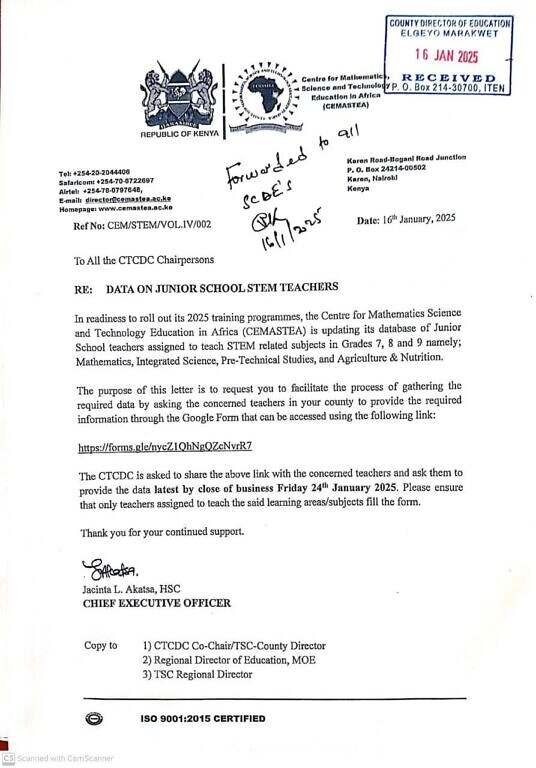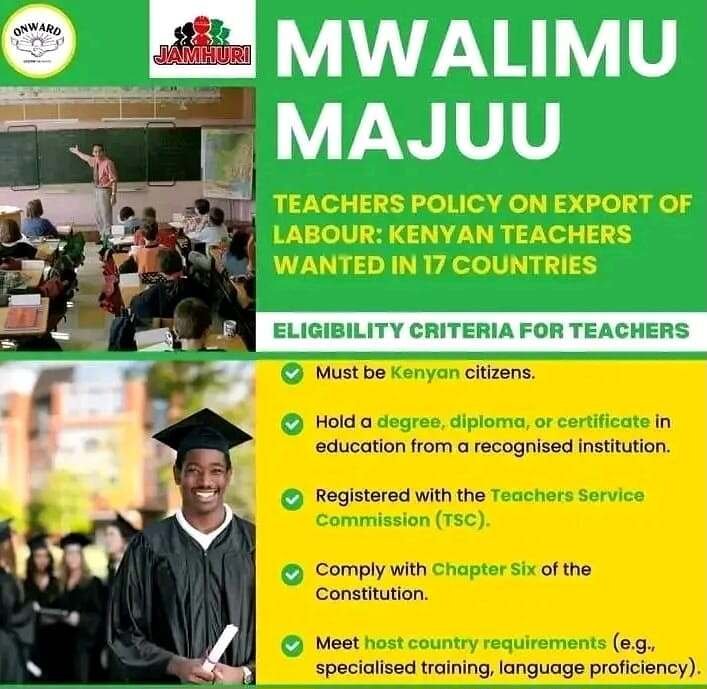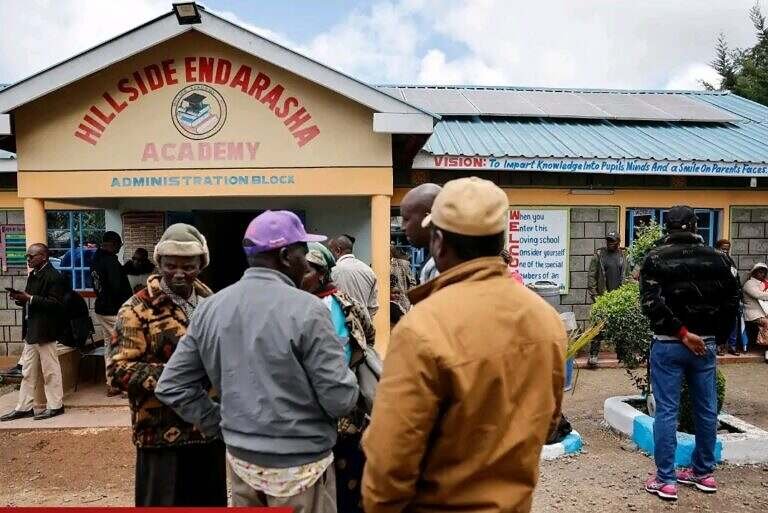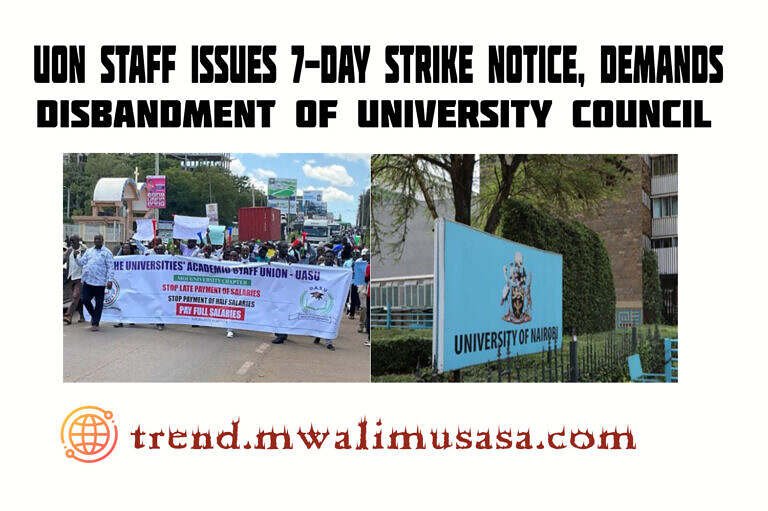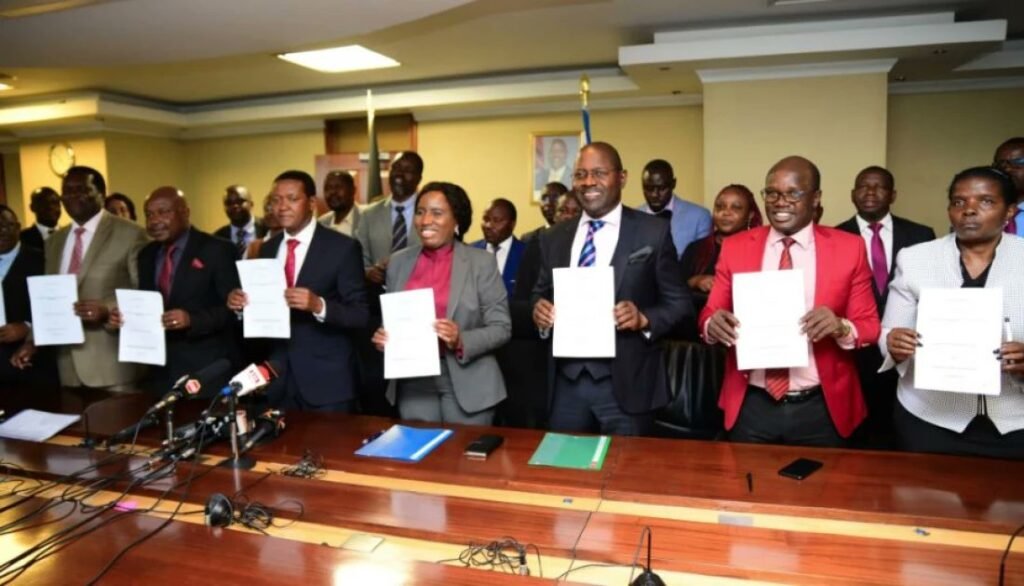
The recent industrial action taken by lecturers affiliated with the Universities Academic Staff Union (UASU) has significantly disrupted academic activities across various universities. This strike, which began in response to a series of grievances, highlights the tension between university staff and administrative bodies concerning working conditions, remuneration, and the overall quality of education. The UASU, representing a large contingent of academic staff, initiated the strike to voice concerns over delays in salary payments, inadequate funding for educational resources, and the neglect of lecturers’ welfare.
Lecturers, who play a crucial role in shaping the educational landscape, emphasized that their demands were not merely self-serving but aimed at enhancing the quality of education and ensuring student success. Faculty members argued that the lack of support and resources directly affects their ability to deliver effective instruction, ultimately jeopardizing students’ educational experiences. The strike led to the suspension of lectures, examinations, and other academic activities, affecting the academic calendar and leaving students in a state of uncertainty.
This industrial action also cast a spotlight on broader systemic issues within the higher education sector. The prolonged negotiations between UASU and university administrations raised questions about the sustainability of funding models, governance structures, and the prioritization of educational quality over financial constraints. As the situation evolved, it became increasingly clear that the outcomes of these negotiations would not only impact faculty and students but would also resonate throughout the educational system, possibly influencing policy reforms in higher education. The significance of this action lies not only in its immediate impact but also in its potential to drive meaningful changes within the academic environment.
Background of UASU and Their Demands
The University Academic Staff Union (UASU) is a key player in advocating for the rights and welfare of academic staff in Kenyan universities. Founded in the late 1990s, UASU emerged out of necessity, responding to a perceived inadequacy in addressing the concerns of university lecturers. Over the years, the union has represented the interests of its members vigorously, championing better pay, improved working conditions, and enhanced academic freedom. The inception of UASU was marked by the unification of academic staff across various institutions, forming a cohesive entity capable of negotiating with university administrations and the government.
Throughout its history, UASU has engaged in several notable actions aimed at addressing the myriad challenges faced by academic staff. The union has organized numerous strikes and protests when negotiations failed, highlighting the urgency of demands related to salary increments, timely payment of dues, and equitable treatment of university staff. These actions have not only underscored UASU’s commitment to its members but have also brought to the forefront critical issues affecting the education sector in Kenya.
In its recent industrial action, UASU issued specific demands illustrating the urgent need for reforms. Among these demands were calls for salary reviews that reflect the current cost of living, improved teaching and research facilities, and comprehensive health benefits for staff members. Lecturers voiced grievances regarding long-standing inequalities in pay structures and emphasized the need for recognition of their contributions to higher education. Moreover, UASU advocated for clear policies to safeguard academic freedom and professional growth. These demands are pivotal in ensuring that university staff can perform their roles effectively, ultimately benefiting the educational environment and student outcomes across Kenyan universities.
Responses from Stakeholders
The recent UASU and IPUCCF agreement to implement a return-to-work formula following the educational strike has elicited a wide range of responses from various stakeholders involved in the academic sphere. University administrations have generally expressed relief at the resolution, recognizing the disruptive effects the strike had on academic operations. Many universities have acknowledged the need to implement immediate strategies to compensate for the lost instructional time and alleviate the resultant academic strain on students. These measures include extending the academic calendar and adopting flexible learning modalities to ensure curriculum completion.
Students, on the other hand, demonstrate a more mixed reaction. While many are undoubtedly relieved that classes will resume, there remains a palpable sense of frustration regarding the impact of the strike on their education. The interruption caused by the strike has left many students facing increased pressure to meet academic requirements within a condensed timeframe. Consequently, student leaders have called for ongoing dialogue with university administrations to ensure that student concerns are addressed in the aftermath of the strike, advocating for a constructive approach to manage the academic disruption without compromising educational quality.
Public sentiment regarding the strike and its resolution also reveals a spectrum of opinions. Some members of the community view the agreement as a positive step towards stabilizing education delivery, emphasizing the importance of prioritizing students’ learning needs. Others, however, critique the circumstances leading to the strike, questioning whether enough is being done to address the underlying issues that prompted the disruption in the first place. Moving forward, constructive engagement among university administrations, students, and the broader community will be essential in fostering an educational environment that minimizes the likelihood of such strikes in the future.
Negotiations: The Role of IPUCCF
The Inter-Public Universities Councils Consultative Forum (IPUCCF) has played a crucial role in the negotiations surrounding the return-to-work formula reached with the Universities Academic Staff Union (UASU). Established to facilitate collaboration among public universities in Kenya, IPUCCF comprises various stakeholders, including university councils and management. The forum’s primary function centers on promoting quality education and ensuring that institutional policies are effectively implemented across the board.
Throughout the negotiation process, IPUCCF served as a mediator between UASU and the university management, aiming to converge differing interests and alleviate tensions. Key figures within IPUCCF, such as university chancellors and vice-chancellors, were instrumental in driving discussions forward. They engaged in dialogue with UASU representatives, who articulated their concerns regarding working conditions, pay, and the overall framework of employment within the academic landscape.
A significant point of contention in these negotiations revolved around salary increments and the provision of benefits to academic staff. UASU argued for a more substantial commitment from the universities to enhance the compensation structure, which they deemed inadequate considering the rising cost of living. On the other hand, IPUCCF emphasized the need for fiscal responsibility and sustainability in addressing these salary demands, hence bridging the gap between offer and expectation was paramount.
Despite these challenges, constructive engagements ultimately led to a consensus that reflected a balance between UASU’s aspirations and the practical limitations faced by university administration. The resultant return-to-work formula signifies a commitment to fostering stable academic environments while seeking an equitable solution for faculty welfare. This collaborative spirit underscores the importance of continued dialogue within the educational sector, with IPUCCF emerging as a pivotal actor in the ongoing efforts to enhance higher education in Kenya.
The Return-to-Work Formula: Key Provisions
On October 18, 2023, the University Academic Staff Union (UASU) and the Inter-Universities Council of East Africa (IPUCCF) reached a crucial agreement known as the return-to-work formula. This formula lays out essential provisions designed to address the concerns of both university lecturers and management, paving the way for a more balanced educational environment. The agreement comes as a response to ongoing negotiations aimed at resolving longstanding disputes that have affected the academic calendar and staff welfare.
One of the key components of the return-to-work formula is the commitment to restoring normalcy in academic operations. This restoration is aimed at ensuring that all educational activities resume without any interruptions. Lecturers will gradually return to their duties, focusing on delivering quality education while adhering to guidelines set forth by the university administration. This structured approach is crucial in maintaining the integrity of academic programs while addressing any lingering issues between teaching staff and management.
The agreement also stipulates a framework for enhanced communication and collaboration between UASU and university management. Regular meetings will be held to discuss progress on various fronts, including the implementation of salary reviews, improved working conditions, and professional development opportunities. These discussions are not only intended to resolve current grievances but also to foster a collaborative relationship moving forward. By emphasizing ongoing dialogue, both parties aim to ensure that educators feel valued and supported within the academic setting.
In addition, the return-to-work formula establishes mechanisms for conflict resolution, ensuring that any disputes that may arise are addressed promptly and effectively. This proactive approach is intended to minimize disruptions in the future, thereby allowing lecturers and students to focus on the educational objectives at hand. Overall, the return-to-work formula signifies a step toward restoration and stability within the university sector, aiming to benefit all stakeholders involved.
Implications for Future Industrial Actions
The recent agreement between the Universities Academic Staff Union (UASU) and the Inter-Public Universities Councils Consultative Forum (IPUCCF) addressing the return-to-work formula marks a significant moment in the realm of higher education. This resolution not only serves as a pacifying measure for current tensions but also paves the way for future negotiations. The implications of this agreement on future industrial actions in the university sector are profound and multifaceted.
Firstly, this agreement could set a precedent for how disputes between academic staff and university management are handled in forthcoming negotiations. By establishing a framework that prioritizes dialogue, it encourages both parties to seek collaborative solutions before resorting to strikes or other forms of industrial action. Such a proactive approach may mitigate the frequency of disruptions in universities, fostering a more stable academic environment conducive to teaching and learning.
However, potential challenges remain. While the agreement is a step forward, the underlying issues that lead to industrial disputes—such as insufficient funding, academic freedom, and conditions of service—continue to linger. Future industrial actions may still arise if these core issues are not adequately addressed. As such, the relationship between lecturers and university management will need to evolve, focusing on continuous engagement rather than episodic negotiations triggered by crises.
Moreover, this agreement could influence the broader landscape of labor relations in the education sector, prompting other unions and management bodies to reconsider their approaches to working conditions and negotiation strategies. Universities may need to adopt more flexible and responsive policies to sustain a harmonious working environment, ultimately benefiting students and staff alike.
Student Reactions and Impact on Education
The recent announcement regarding the return-to-work formula signed by the University Academic Staff Union (UASU) and the Inter-Public University Councils Consultative Forum (IPUCCF) has been met with a mixture of relief and cautious optimism among students. After an extended industrial action that disrupted academic schedules, students have expressed their hope for a swift return to normalcy. The prolonged strike significantly impacted their educational journey, leading to a backlog in syllabus coverage and assessment schedules. Many students found it challenging to maintain their academic momentum during the strike, as the interruption in lectures and practical sessions created gaps in their learning.
Students have shared their experiences, highlighting the emotional toll of uncertainty as they anxiously awaited resolutions to the stalemate. The industrial action not only affected their academic progress but also placed immense pressure on their mental well-being. As students endeavored to adapt to an unpredictable learning environment, many turned to self-study and online resources to keep pace with their studies. However, the consensus remains that these alternatives could not fully replicate the comprehensive education they receive in a structured classroom.
The pivotal role of consistent education for student success cannot be overstated. Students rely on faculty support for a detailed understanding of complex concepts and collaborative learning experiences. According to student representatives, the dependable involvement of academic staff is critical for fostering a conducive learning environment that encourages both intellectual and personal growth. The return-to-work formula is seen as a necessary step toward restoring stability in universities and ensuring that students can attain their academic goals without further disruptions. Overall, it is evident that while the announcement brings a sense of relief, the journey ahead requires collective effort to mitigate the ramifications of the industrial action and reaffirm the commitment to quality education.
Government Involvement and Policy Considerations
The role of the government in addressing educational disruptions, particularly in the context of the recent strike, has been pivotal. As the stalemate between the University Academic Staff Union (UASU) and the Inter-Public University Councils Consultative Forum (IPUCCF) unfolded, government intervention became increasingly necessary. Government representatives began facilitation efforts, emphasizing dialogue as a means to bridge gaps between the involved parties. Such involvement not only showcased the commitment of the government to maintaining educational continuity but also underscored its responsibility in mediating conflicts that interrupt academic processes.
A series of discussions were initiated, leading to the development of a return-to-work formula aimed at resolving outstanding grievances. This formula not only facilitates the reopening of institutions but also aims to ensure that the rights and responsibilities of academic staff are respected moving forward. The government’s proactive stance highlighted a broader understanding of the impact of prolonged strikes, particularly how they affect students’ educational trajectories and institutional reputations. Thus, government engagement is paramount for fostering an educational environment conducive to learning.
In addition to immediate intervention, policy considerations stemming from this agreement are also essential to deliberate. It is vital that lessons from this strike lead to comprehensive policy reviews to address underlying issues affecting higher education. Policies concerning wage negotiations, staff welfare, and student engagement need to be critically assessed and reformed where necessary. Such reforms could serve to prevent future disputes, ensuring that education remains uninterrupted. As this agreement moves forward, careful consideration of these policy implications will be critical in establishing a stable and functional academic framework.
Conclusion: A Step Towards Stability in Higher Education
The recently signed return-to-work formula between the University Academic Staff Union (UASU) and the Inter-Public Universities Councils Consultative Forum (IPUCCF) marks a significant moment in the landscape of higher education. This agreement represents a constructive resolution to ongoing disputes, allowing educators to return to their vital roles while fostering an environment conducive to learning and growth. It is crucial to recognize the potential positive impact of this agreement on various stakeholders, including tenants of academia, students, and the institutions themselves.
However, while this return-to-work formula signifies progress, it does not eliminate the multifaceted challenges that still exist within the university sector. Issues such as funding constraints, resource allocation, and the ongoing need for effective policy implementation continue to affect the academic landscape. Addressing these challenges will require ongoing dialogue and collaboration among all parties involved. The importance of robust communication and negotiation cannot be understated, as they contribute to building trust and resilience in the educational framework.
The long-term benefits of this agreement could be profound for educators and students alike. Educators will likely experience a renewed sense of job security and support, which can elevate the quality of teaching and mentorship provided. For students, stable learning environments will pave the way for enhanced educational outcomes and personal development. Academic institutions stand to benefit too, as improved morale among staff members translates to a more productive and engaged workforce. It is the collective responsibility of all stakeholders to uphold the spirit of this agreement and focus on building a more sustainable future for higher education. Thus, while this step is commendable, ongoing commitment to collaboration and problem-solving is essential for lasting stability within the university sector.
